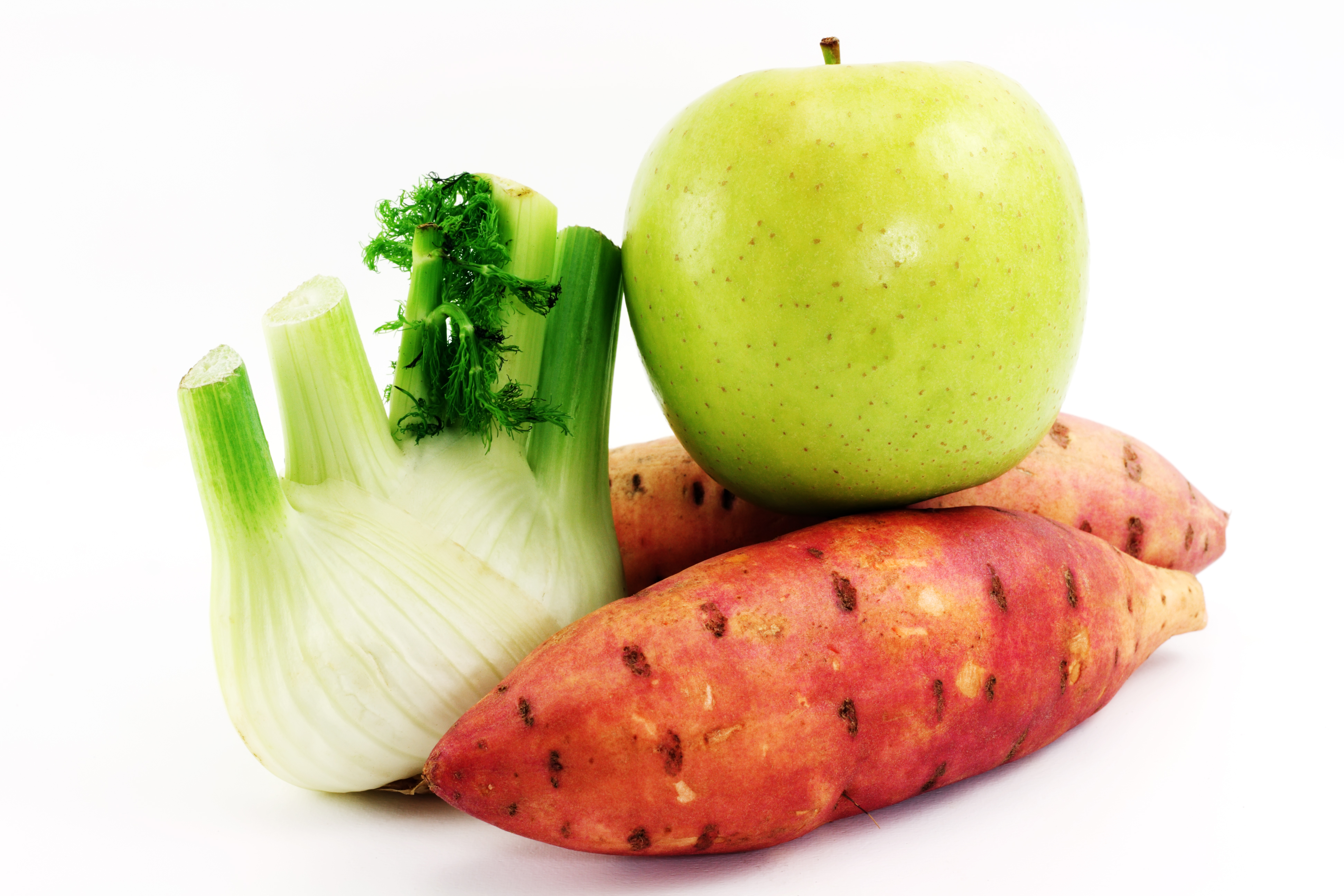Debbie J., MS, RD contributed this article –
Many people eliminate carbohydrates as part of their weight loss plan, but they are afraid to resume a normal and healthy diet once the excess weight is off. Of course, adding calories from any source will lead to regaining weight if you are eating more than you are burning. The key is to replace other foods you eat (often protein or fat) with only whole food carbohydrate sources.
Let’s take a look at whole food carbohydrates. If the food is intact as obtained from its original plant then chances are it’s a whole food. Corn on the cob, baked sweet potato, quinoa, whole beans, and an apple are all examples. Bakery and cereal products “made from whole grain” are actually processed foods containing whole grain and are not whole foods. So even 100% juice is not a whole food unless you made it yourself by liquefying a few pieces of whole fruit in your power blender.
Essentially you are going to cut back on the meat, poultry and nuts to allow for an equal number of calories to come from these whole food sources of healthy carbohydrates.
Is this really worth the effort? Is there really a health benefit?
Yes! Whole food sources provide essential fiber, vitamins, minerals and phytochemicals, and they are proven† to help keep weight off. Long-term weight maintenance means being able to follow an eating regimen throughout one’s entire life, and not as a temporary fix or fad.
No Carb Diet? Think Twice, You Need Carbohydrates to Survive!
Can’t I get enough carbohydrates from vegetables?
Of course! But it would take such a plethora of veggies to reach an equal amount of carbohydrate that starches or fruit provide.
For example, two small pieces of fruit plus 4 servings of starch contain roughly 100 grams of carbohydrate. It takes about 10 cups of cooked vegetables to reach that amount! Even the most astute vegetarians don’t eat that much.
What about grains like oats and brown rice? Are they whole food carbohydrate sources?
Oats and brown rice are tricky ones to define. Technically they are grains with the husk (also called hull) removed so they can be digestible by the human gut. Then the oats are either rolled or cut to further ease digestion. You just can’t chew RAW oats off the plant, so the steel-cut Irish oats, thick-cut rolled oats or oat groats are the closest whole food form available. Sorry, but the traditional quick oats in a cardboard tub won’t do – they have gone through a couple more processing steps. The kernels of brown rice aren’t raw, but are the form closest to whole available. Thus, brown rice is generally accepted as whole grain.
If you are one of the lucky folks whose weight, blood lipids, and other physical measures remained improved after more than a year on a reduced carbohydrate diet, then kudos to you. Your genetic disposition may indeed thrive under that condition. Perhaps all you need is a complete multivitamin/mineral supplement to replace the micronutrients you’re missing from avoiding whole grains, legumes and fruit.
But, for the majority of us who are looking to keep weight off with a balanced diet, we need to take whole food carbohydrates to heart.
† A review of 50 weight loss studies concluded that the proportion of macronutrients in the diet was not as important in weight loss as carbohydrate content. Plenty of fiber-rich foods, whole grains and nuts were associated with less weight gain. Dietary macronutrients and food consumption as determinants of long-term weight change in adult populations: a systematic literature review. Fogelholm M, Anderssen S, Gunnarsdottir I, Lahti-Koski M. Food & Nutrition Research 2012; 56.
“Body weight loss and weight maintenance depends on the high-protein, but not on the ‘low-carb’ component of the diet” per Soenen et al. Relatively high-protein or ‘low-carb’ energy restricted diets for body weight loss and body weight maintenance? Soenen S, Bonomi AG, Lemmens SG, Scholte J, Thijssen MA, van Berkum F, Westerterp-Plantenga MS. Physiology & Behavior 2012 Oct 10:107(3):374-380.
Additional notes:
Resistant starch, an indigestible portion of plants like fiber, increases fat oxidation and may increase energy expenditure by increasing the caloric cost of processing ingested food. RS has been shown to blunt the rise in blood sugar and subsequent insulin after a meal. Thus resistant starch improves insulin sensitivity. It increases satiety and helps prevent fat deposition. RS is prominent in potatoes, slightly green bananas, beans, parboiled rice, cashews and raw oats.
Low glycemic carbohydrate choices are associated with weight maintenance following loss. High glycemic foods such as refined flour products relate to weigh regain.
A growing body of research supports fruit and vegetables vs. grain carbohydrates as effective in weight loss and weight maintenance.


Hello Debbie! This post is something that most low-carb dieters can’t easily swallow. But I totally agree with you carbohydrates are needed by the body especially when we have a very active lifestyle.